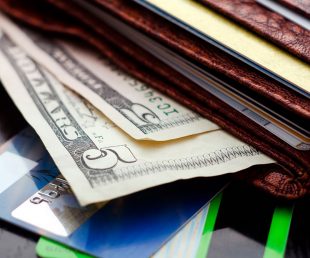As conventional wisdom suggests, there are few certainties in life, and one of them is taxes, but determining whether to tackle your taxes yourself requires a bit more thought.
Just over 41 percent of Americans personally filed their taxes last year. And while there are more exciting ways to spend a weeknight or two, doing your own taxes not only saves you money but also provides a deep dive into your financial picture.
For example, as you gather your financial information, you may discover ways you can save more or find strategies for reducing your tax bill. However, before starting, take the time to understand your options for filing taxes, as well as the benefits and risks of doing it yourself.
Should you do your taxes yourself?
To answer this question, you need to assess whether you have the time and patience to put together your taxes—or, conversely, whether you can afford to have a professional prepare them for you. Broadly, if you have one job and one source income—and few financial complications—then filing your own taxes is relatively straightforward. For instance, the IRS reports that it takes the average taxpayer 13 hours to prepare their tax return; however, for tax-filers using the 1040EZ form, the time is reduced to about five hours. The 1040EZ form is the income tax form tax for filers with no dependents and a straightforward tax situation. It was designed to be fast and easy (aka EZ) to file.
To decipher whether doing your own taxes is a smart option, consider:
- Do you own your business? If so, you can still file your own taxes, but the filing requirements are more involved, and the time commitment will increase significantly.
- Do you earn income from other work besides your main job? This can also add complexity to your return, as you’ll have various sources of income to consider and report.
- Do you have dependents, sizable investments, or make significant charitable contributions? All of these factors impact how much you pay, and a professional can help ensure you’re maximizing your deductions and not overpaying.
In addition to the above, consider your motivation for filing your own taxes. Doing so can certainly save money, and it also keeps you in control of your finances and tax obligations—you submit the filing, and you know why you reported what. If your tax picture is simple, and you’re up for the task, then filing yourself is an excellent education and saves you the expense of hiring someone else.
Best practices for do-it-yourselfers
Once you decide to tackle your taxes, there are some actions you can take to ensure you do them correctly—and get your return finished on time.
- Gather the necessary documents.
A great place to start is with last year’s tax return. Find your document or record of your e-filing and keep it on hand as you proceed with this year’s return. Collect information from your employer, including your W2, which will show how much income you collected this year. If you have taken on side projects for more than $600, gather up the 1099s that your clients should have sent you. Gather documents that denote income you’ve received via interest earned or dividends. These are typically another version of 1099 forms.
- File your taxes for free or cheap.
There are multiple free online tax filing tools, and many of them are free for individual filers using the 1040EZ forms. The IRS even provides a list of free filing apps for individuals who meet the income and other requirements. Other online services may charge a small fee, but provide software that walks you through the filing process.
- Leave yourself enough time.
If you’re employed with one job and don’t have too many complicating factors, then you should be able to complete your return in one or two evenings. However, procrastinating doesn’t pay here. If you end up missing the filing deadline, then you may face a failure-to-file and failure-to-pay fines. The first is 5% of your unpaid taxes for each month the return is late. The second is .5% of your unpaid taxes for each month you haven’t paid. If you’re expecting a refund, then the sooner you file, the better. That’s because the IRS issues refund within 21 days of receiving your e-filed return (six weeks for mailed returns).
- Don’t forget about state taxes.
Depending on where you live, you may also need to file a state tax return. They’re usually due the same day as federal taxes, though a few states have due dates later in April. Check with your state department of revenue website for information about what you need to file and when the return is due.
- Ask for help if you have a question.
Even if your tax situation is simple, you may have questions about how to fill in specific fields in your return. You can call the IRS; the agency staffs phones from 7 a.m. to 7 p.m. Monday through Friday. The most common online tax filing services and software, such as Turbo Tax and Tax Act, also have lots of information on their websites. If you find yourself stymied, you can reach out to a certified public account for professional tax help. Just know that their services will usually cost at least a few hundred dollars.
Doing your taxes is a great way to learn more about your personal finances and taxes in general. Follow these tips to ensure you’re not making any major missteps and you’ll easily go from the first-time filer to a do-it-yourself pro.
Santander Bank does not provide financial, tax or legal advice and the information contained in this article does not constitute tax, legal or financial advice. Santander Bank does not make any claims, promises or guarantees about the accuracy, completeness, or adequacy of the information contained in this article. Readers should consult their own attorneys or other tax advisors regarding any financial strategies mentioned in this article. These materials are for informational purposes only and do not necessarily reflect the views or endorsement of Santander Bank.
Equal Housing Lender. Santander Bank, N.A. is a Member FDIC and a wholly owned subsidiary of Banco Santander, S.A. ©2019 Santander Bank, N.A. All rights reserved. Santander, Santander Bank, and the Flame Logo are trademarks of Banco Santander, S.A. or its subsidiaries in the United States or other countries. All other trademarks are the property of their respective owners.
![]()


